One of the least popular (due to concerns about implementation complexity) features in health apps are features related to social moments (specifically, social support).
However, this is not actually the case, as no one is compelling anyone to create a new Facebook.
After all, one can incorporate separate small elements, investing a small amount of time, which can greatly enhance both business metrics and reputation among users (since the app will progressively help them manage their health (or disease), better comply with medication and as a result, better patient outcomes).
In other words, the Social Support in the health app effect can be divided into two parts:
1. Positive Behavioral Changes (patient outcome): health apps that foster social connections often lead to positive changes in behavior. By the way, we’ve written about how to change behavior through design here 🙂
Users are more motivated to adopt healthier habits when they see others in the community achieving similar goals. So, social support in the health app helps users to maintain each other and increases motivation with friendly competitions.
Also, when it comes to patients dealing with a more or less severe condition, the fact that they can rely on a support community of people who are going through the same ordeal is also very helpful, they can share distress, anxiety, get some tips on how dealing with certain aspects of the treatment or of the disease, etc.
In other words, they talk to peers who listen to them, understand them, make them feel like they are not alone and belong to a resourceful group. This factor also plays an important role in patients’ outcomes.
2. Increased Engagement & Retention (product metric): users who are part of a supportive community are more likely to continue using the app over an extended period.
Because they know that real people every day create interesting content and discussions. And they want to participate in this.
And when these two moments are combined, it results in patient satisfaction. For example, this research shows that social support in the health app influences user satisfaction and drives app virality.
Moreover, the objectives of such social support can vary and depend on the type.
The goal might be to demonstrate that treatment is tested by real experts (trust-based support), simply to create motivation and purpose to avoid stopping halfway (engaging support), or to help an individual reassure themselves about their treatment choice (information support).
So, now Infused Communications Founder & Digital Health Consultant Marine Lhomel and our team will discuss these types and show how this very social support is created. How does social support affect health?
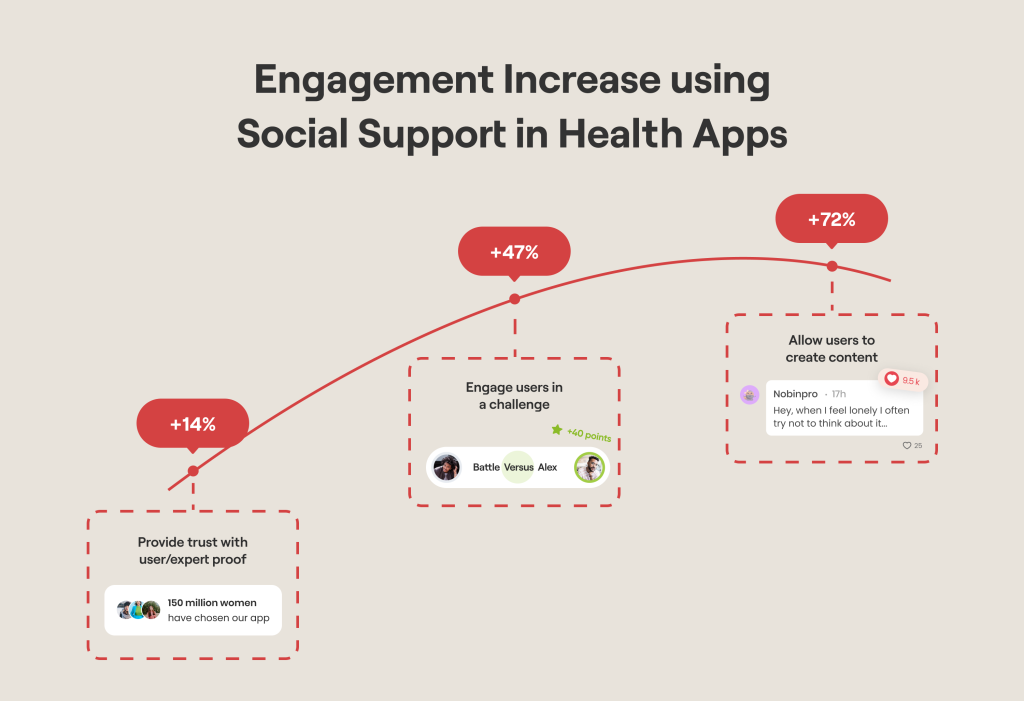
I. Trust-based social support: real people talk
1. Show expert credentials
Our friend Nick didn’t want to use a health app because he wasn’t sure if the treatment program was reliable and safe for him.
Authoritative methods and innovative approaches should be substantiated by something, as users might get the feeling that they are guinea pigs. Therefore, side effects or a lack of results can still exist.
In the realm of Healthcare, apps frequently highlight that their content is created by certified experts such as doctors, psychologists, nutritionists, or fitness coaches. And if we use digital health apps that are certified as medical devices, we must show that we follow the standards (HIPAA, GDPR, PIPEDA, etc).
By showcasing the proficiency and credentials of these specialists, apps enhance the trustworthiness and dependability of their content, offering users reassurance that they’re accessing expert guidance.
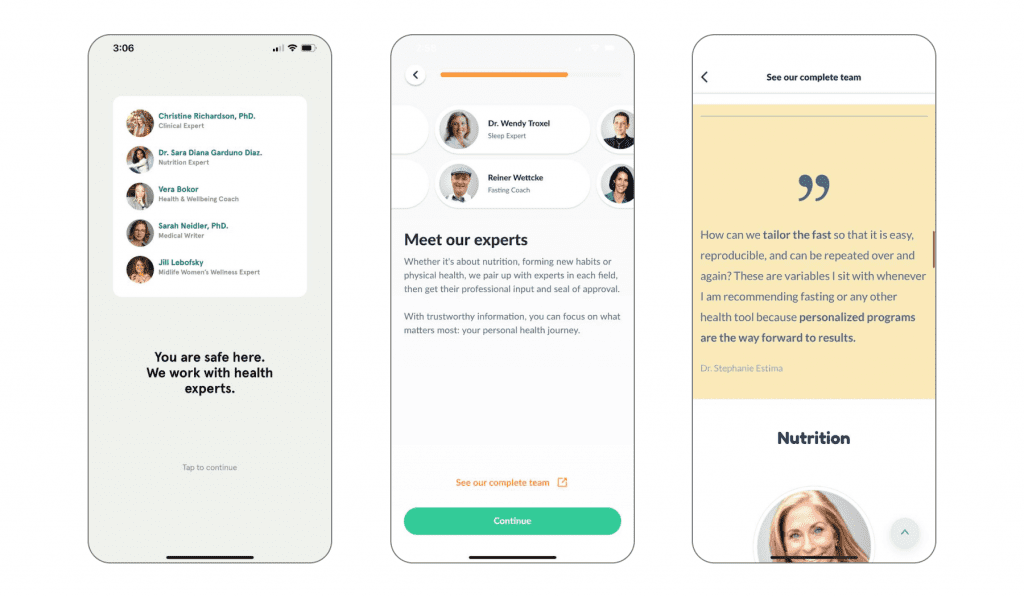
Image Credits: Fastic
This contributes to emotionally intelligent design in mobile healthcare apps. Users gain greater confidence in their choice to interact with the app, assured by the positive experiences of others and the endorsement of qualified professionals.
Social proof becomes a potent tool in dispelling user uncertainties, ultimately enhancing the conversion rate of the customer journey.
2. Share user success stories
Alright, there’s evidence from experts, but what about real people?
Your app can include sections or segments during the onboarding process that showcase real-life success stories from users. These stories illustrate how the app has successfully tackled particular challenges and aided individuals in reaching their health objectives.
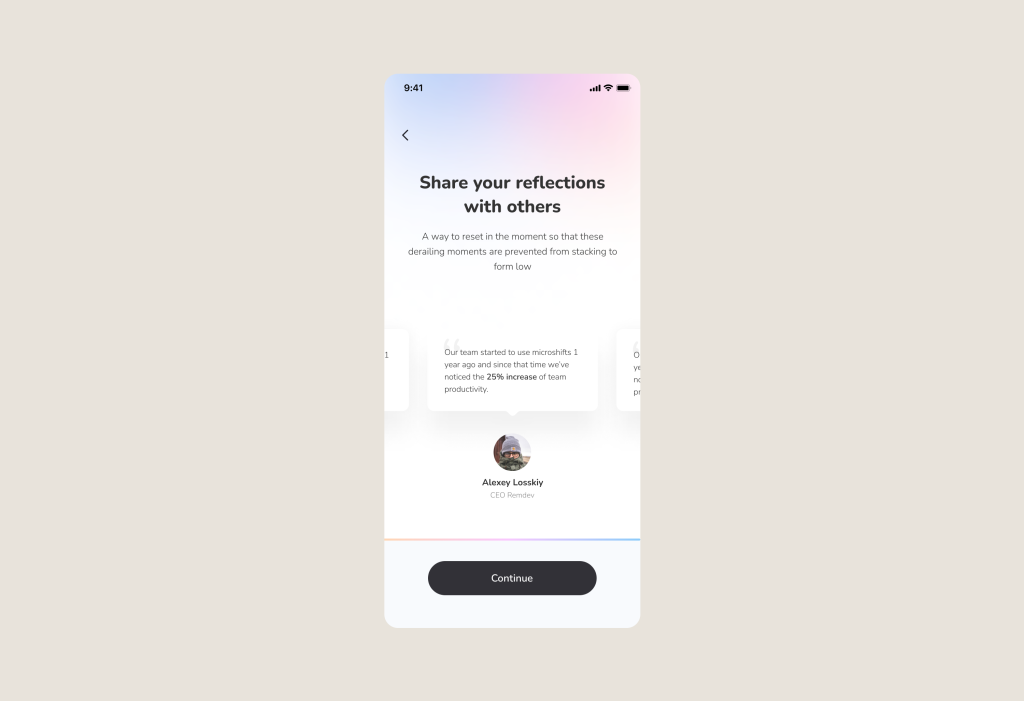
By sharing these favorable experiences, apps foster assurance and cultivate trust among potential users. This functionality boosts the overall number of registrations and reduces user attrition.
Or try to show the scale. After realizing that collecting excessive amounts of data isn’t necessary, it’s important to focus on presenting your own data regarding success and satisfied users.
Because providing this information right at the beginning of the onboarding process convinces the user that if it has helped so many people, it will help them too.
Let’s even showcase an example with the Flo app. Right from the first message, the app demonstrates social trust by highlighting the large number of users. This approach aims to increase the total number of registrations and reduce user churn.

Image Credits: Flo
3. Create behind-the-scenes & stories from Specialists/Developers Stories
Providing examples from the experiences of your people (your team or specialists connected with the app).
For example, on the website of Sensae, a company we worked with, there is a mini-story and an example of an couch’s experience:
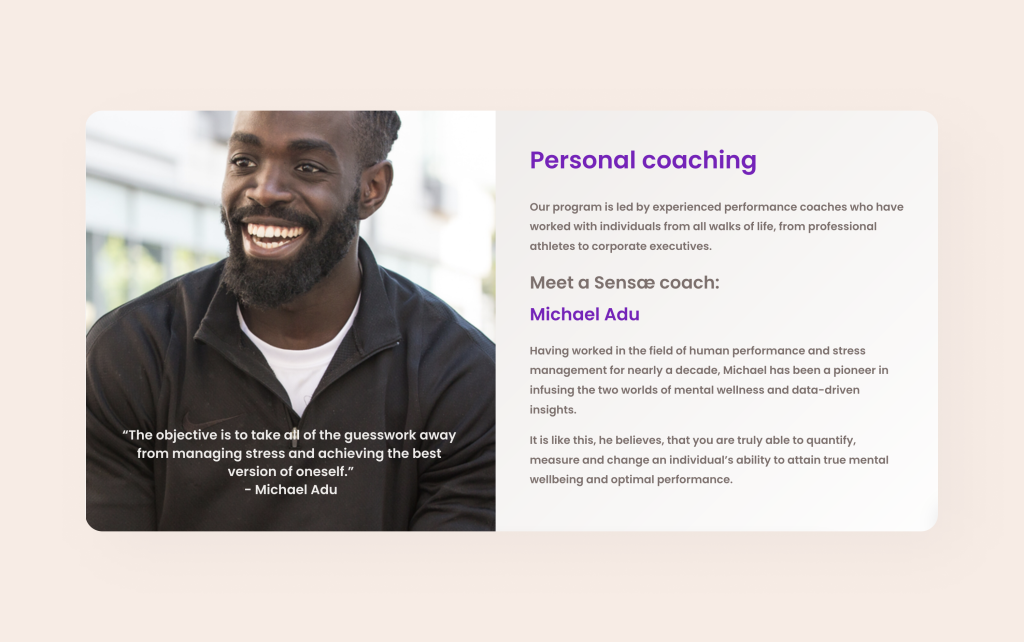
Learn how we’ve built AI health platform for Danish company
For context: Sensae is a Danish mental wellness company helping people to manage stress & anxiety by using AI to interface with emotions through personalised haptic biofeedback (wearable devices that use vibrations, pressure, or other tactile sensations to convey information).
In their app, there was also communication with coaches who curated or adjusted the program. Therefore, a more detailed account of their emotions and experience will encourage the user to use the app and perhaps even consider taking on one of these coaches as their mentors. What’s the next step in designing social support in health apps?
II. Engaging social support: create user community
As Marine Lhomel noticed: when we delve into the intricate web of patient empowerment, satisfaction, and outcomes, one key element stands out—the creation of robust user communities within digital health apps. In this exploration, we’ll unravel the profound impact that cultivating a user community can have on user experience, thereby elevating patient engagement and well-being.
1. Building a Foundation for Patient Empowerment:
Personalized Journeys: user communities provide a platform for users to share their unique health journeys, fostering a sense of relatability and empowerment. Digital health app features should allow users to personalize their profiles, share stories, and connect with others on similar paths.
For example, let them share the results
To start, consider that humans are inherently social beings. Social media’s global appeal is no coincidence, and if an app can nurture a comparable sense of community, it will motivate users to reconnect and reuse the app. Establish a sense of communal belonging and encourage participation by establishing a curated list of highlights.
Let’s take a recent case as a concrete example. Microshift is an app where you listen to a meditative track during breaks and share your current mental state.
The app integrated the concept of “circles.” The core of this feature lies in creating an emotional backdrop: we encourage people to listen to the content and communicate their emotions with each other in the digital realm.
In other words, after completing a meditation session and providing feedback to the app, you can immediately share your progress, mood, and feelings directly within the community:
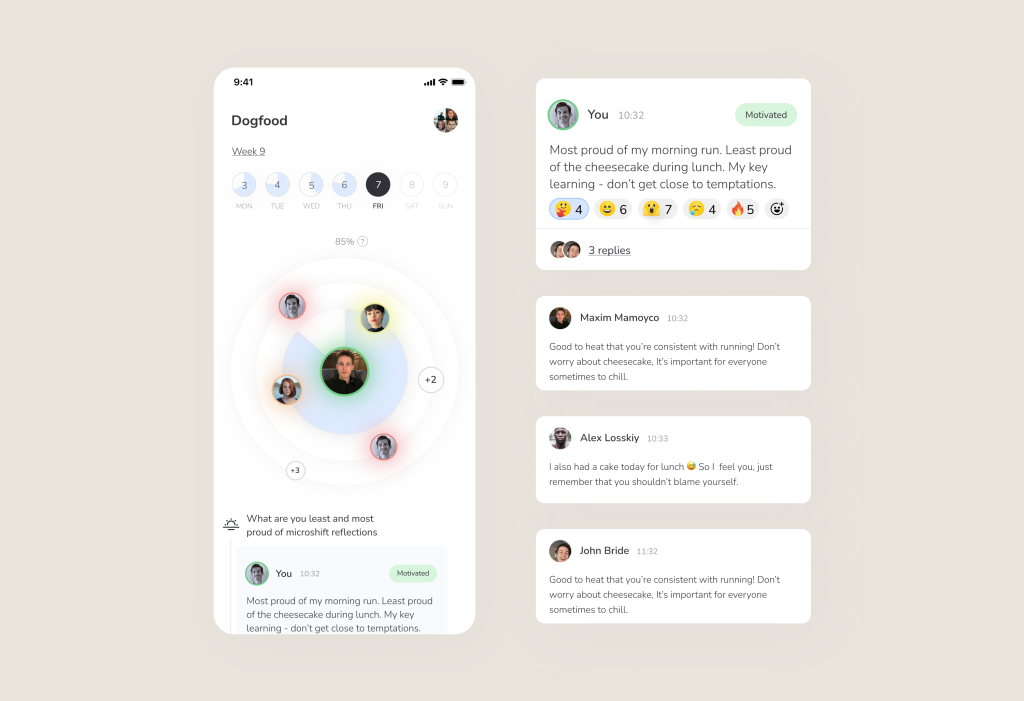
Learn how to build such an app in 2 months
In days of old, people would gather around a fire; now we can recreate a similar connection, even across distances.
This collaborative approach and emotional bond among users tackle the challenge of enhancing user engagement and aid users in effectively managing their well-being.
Expertise Exchange: facilitate knowledge exchange by incorporating discussion forums or live chat functionalities. Empowering users to share insights and advice transforms them from passive participants to active contributors in their health management.
Keep in mind that social networks have become a global sensation for a reason, and if an app can foster the same sense of community, it will encourage users to engage and use it again. Foster a sense of belonging and invite participation by creating forums, polls and content.
For instance, in the ProgressMe app (an app that aids young individuals dealing with eating disorders), we added features like creating polls and content, including comment sections for discussion.
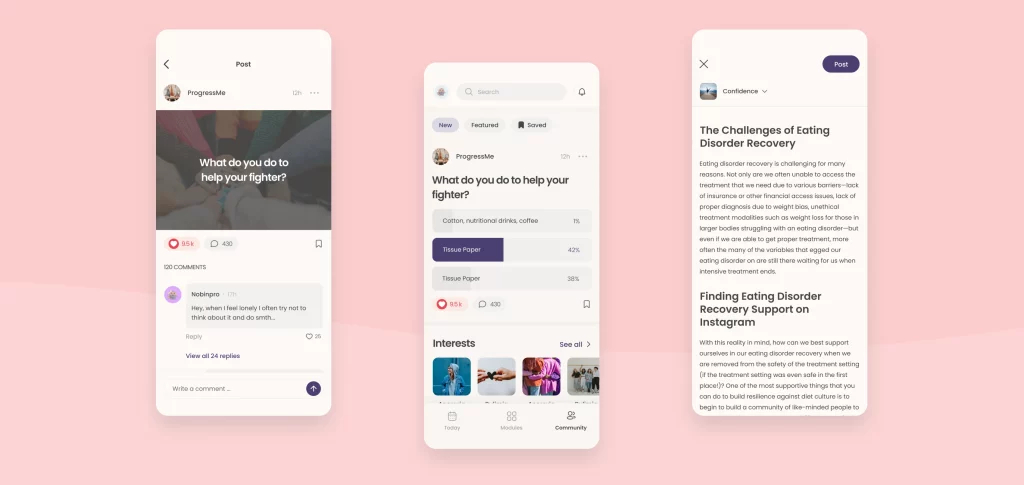
Learn how to built platform for eating disorder treatment
Why is this still so important? Besides increasing Retention and Engagement rates (both for content creators and readers), you might also notice certain issues that are missing from the app.
Because if users turn to external forums (such as Reddit), you run the risk of either losing the user (since they might start recommending competitor solutions) or failing to track moments where engagement decreases. It can create the real impact of personalized human support on engagement.
2. Elevating Patient Satisfaction Through Community Connection
– Humanizing the Experience: the digital health app should aim to humanize the digital health experience. Incorporate features like avatars, user-generated content, and multimedia sharing to create a sense of community. When users feel a connection to others in the community, their satisfaction with the app increases.
– Real-Time Interaction: the implementation of real-time communication tools such as chat or video conferencing enable immediate connection. Quick responses to queries and timely support can significantly enhance user satisfaction.
3. Involving in collaborative challenges
Have you ever experienced a situation where your competitor ignited a sense of challenge in you, and you engaged in a race against them with a special fervor? Or perhaps you recall sports games and marathons you participated in, feeling the excitement and a subtle desire to prove yourself.
Well, right now, we’re about to do the same with our users 🙂
Another compelling instance of a social moment in health apps involves interacting with fellow users through challenges and leaderboard competitions, as it enhances motivation and user accomplishments. A support network enhances determination, while friendly rivalry fuels a desire for victory.
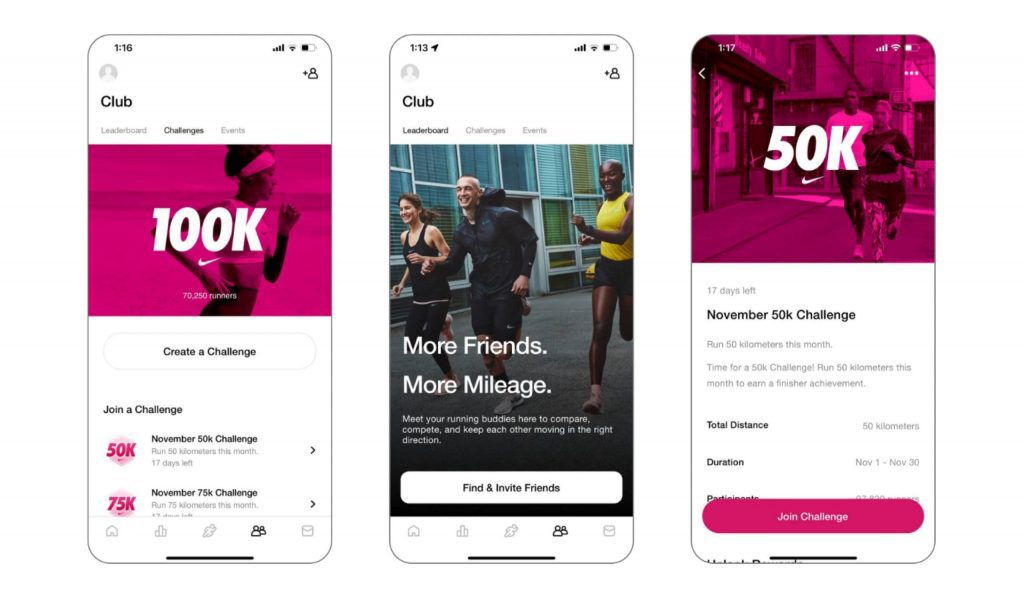
Source: Nike Training Club
Through collaborative elements and leaderboards, these apps cultivate a sense of camaraderie and encourage users to strive even more vigorously towards attaining their health objectives. And naturally, this positively impacts the retention rate.
By the way, if you’re interested in delving further into the topic of retention, we’ve explored it in-depth in this article.
And dig a dipper. Make competitions between friends.
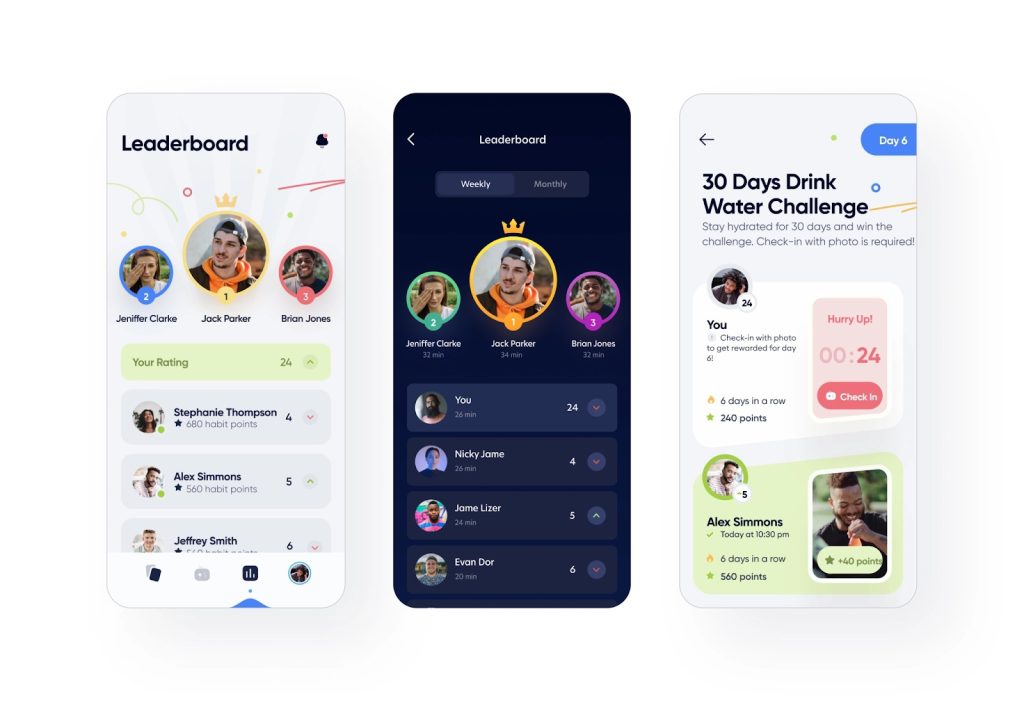
When you’re doing anything with a familiar person, it automatically becomes simpler. You can aid one another as you complete the assignments.
Additionally, competing against a real friend inspires people to take on the challenge and start using the app. This is how we bring new users.and succeed.
III. Information social support: if users don’t know, we prompt
1. To do this, we will give you the opportunity to create questions
It’s not always the case that we have a comprehensive FAQ, as we can’t anticipate all possible rare user questions. Furthermore, after studying their treatment journey, users might want to interact with those who have already undergone treatment, for instance, to ask how they cope with their disorder.
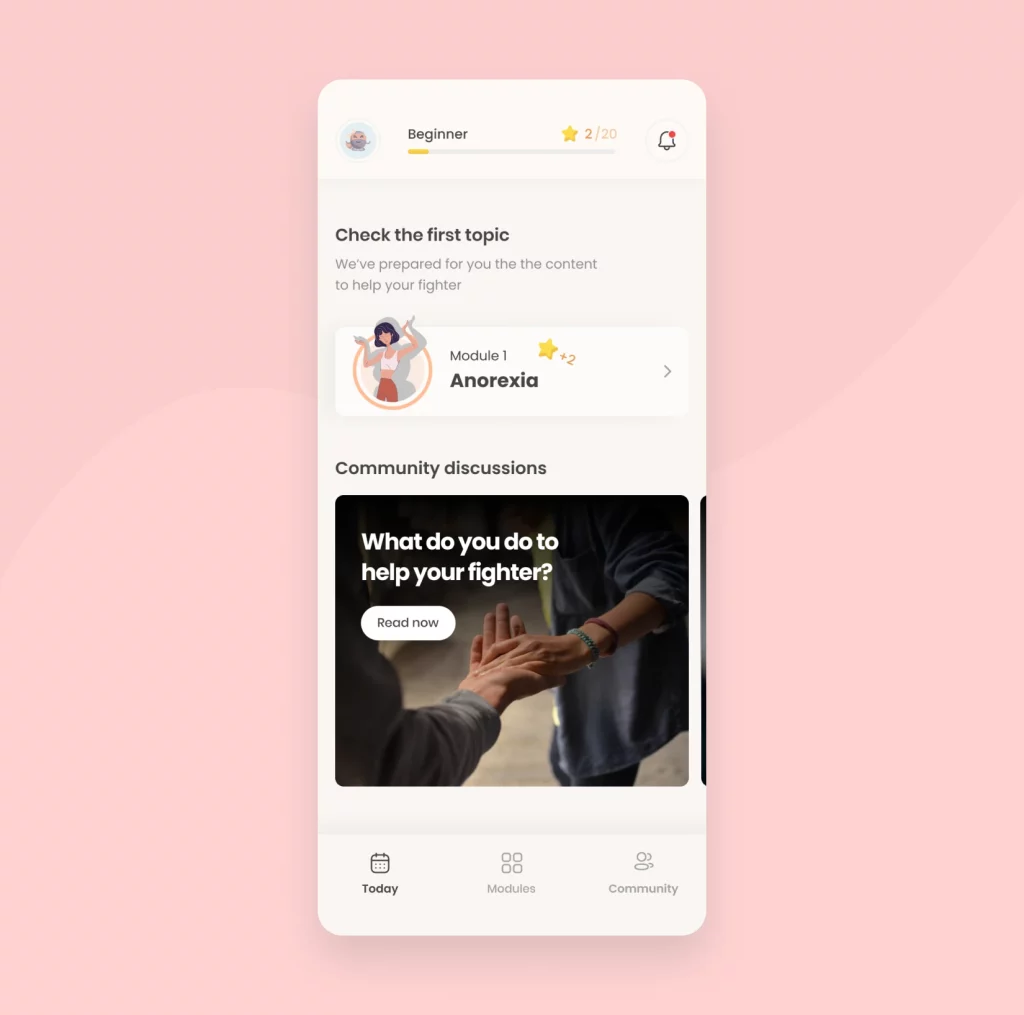
Yes, the treatment is already provided by the app or specialists, but there’s still a category of users who wish to double-check or ask publicly among a larger group of people.
What if a user is shy about public interactions? This issue can arise both in the stage of commenting and creating articles from the previous point, and especially now when a user, despite having completed treatment, wants to clarify something.
Some individuals might fear being considered foolish if they ask questions related to treatment within the community, as opposed to asking a doctor who has already provided everything.
However, that’s not accurate, and seeking a second opinion, even from non-doctors, is a normal practice. Users come from diverse backgrounds, and it’s essential to consider that among them are those who lack confidence and need assistance through specific features.
For example, in the Allbry app, we implemented an anonymity feature, allowing students to interact with the app without revealing their data.
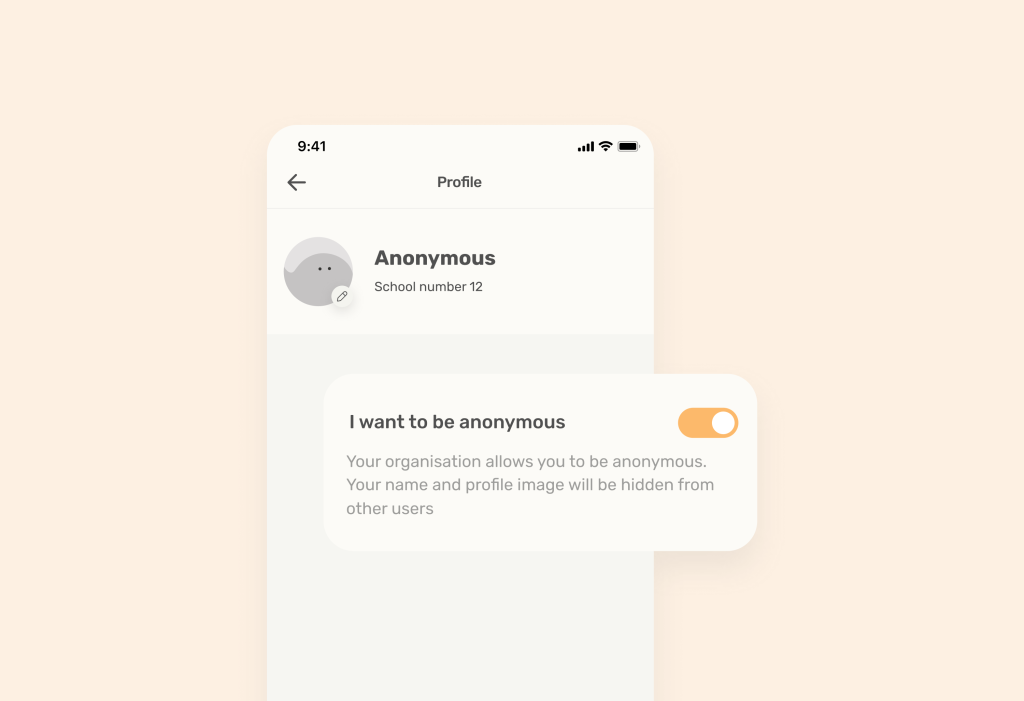
For context: Allbry is a Swedish telemedicine company focused on making mental health support accessible to young people, providing a comprehensive digital platform for student health teams and students. This is why such a feature is especially important in the mental health sector.
Moreover, such a feature is popular in the market and can be found in the already mentioned Flo app. Their feature is based on separating health data from personal information and creating a new anonymous mode account that doesn’t contain any unique user identifiers.
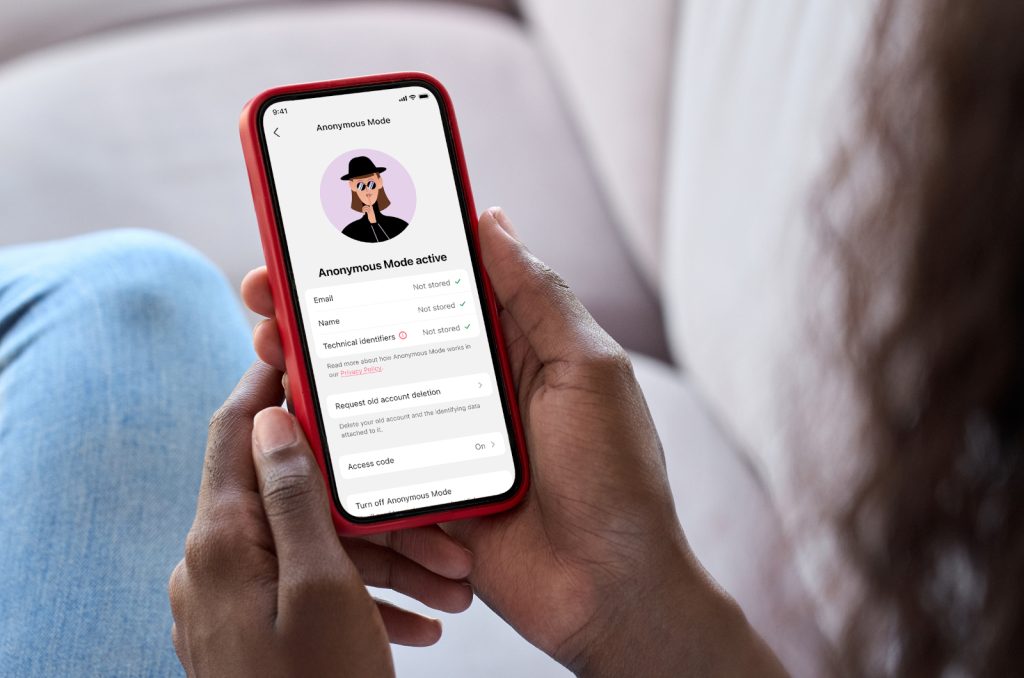
Image Credits: Flo
2. And we provide a support team
This is the example of strong impact of personalized human support on engagement.
Just imagine your symptom checker providing various disease possibilities or a user simply struggling with the app. For instance, this might happen because we decided not to fulfill all AAA requirements of WCAG Standards for Accessibility to avoid overloading the app.
So, what to do in such cases? Simply provide the option to contact technical support. Just include the necessary option in the settings, allowing users to reach out for assistance.
And don’t forget about Multilingual Support! This is the importance of social support in a health app. Think about offering language choices and localization assistance to cater to users from various linguistic backgrounds. Otherwise, right from the initial interaction with the application, users might find themselves unsure about where to navigate.
However, keep in mind that this last recommendation might not fit everyone due to different startup budgets. Therefore, it might be needed at a later stage of product scaling.
By the way! If you want to delve deeper into the topic of increasing retention and engagement in digital health apps, read our book on how to:
1. Make product strategy to drive retention and engagement
2. Use best CX (UI/UX) practices to make an app not just used but loved
3. Construct best Engineering practices to build scalable solutions
4. Count compliance with healthcare regulations
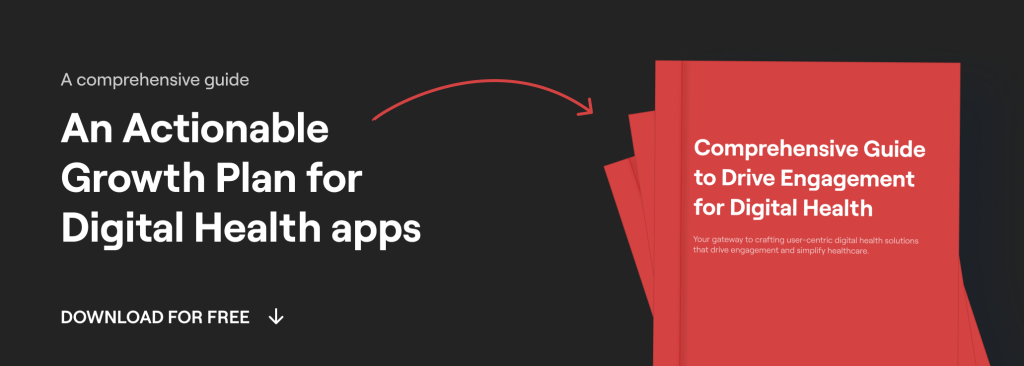
Download Free Actionable Insights to Grow your Digital Health app
We hope this article was useful for you!
Who we are? We are a digital health product studio, who transforms healthcare digital experiences and sets new standards for delivering digital healthcare in a way that positively impacts people’s lives.

We assist healthcare startups in designing and developing digital products, while also helping healthcare organizations undergo transformative changes.
If you are interested about our experience check our portfolio with case studies by the link or you can read more about us here.
And write to us now on m@nozomihealth.com and we will discuss how we can help ensure that your product brings real benefits







